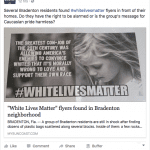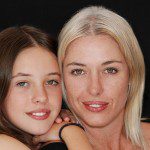A recent article assessing the state of South African racial inequalities more than two decades after apartheid provides an opportunity to think about the current state of inequalities in our own country. The article begins as follows:
Despite claims to the contrary, a study of black ownership on the Johannesburg Stock Exchange shows clearly that black South Africans remain small time players. According to a recent study, only 23% of the shares traded on the exchange are held – directly and indirectly – by black South Africans.
For reference, 80% of South Africans are black; 8% are white. After touching on the stock market, the article covers three forms of inequality—land ownership, education, and assets. We see inequalities in all three of these areas in the United States as well.
Land Ownership
On top of this, capital, in its varied forms such as the land, property and human capital, remains heavily skewed to white ownership.
The land is particularly important in the South African context as it carries most colonial scars. The country’s colonial and apartheid regime (both white minority) used expropriation to remove people from their land. They then used this stolen land to accumulate capital in the forms of mining and agriculture.
At the time of apartheid in 1994, more than 80% of the land was in the hands of white minority. Data from the Institute of Poverty, Land and Agrarian Studies suggest that just under 60,000 white-owned farms accounted for about 70% of the total area of the country in early 1990s. Land reforms programme has been slow. Some suggest that less than 10 % of the total land has been redistributed from white to black ownership since 1994.
This is one of those issues that is difficult to fix. Land redistribution either requires the government to buy land from white Africans and sell it to black Africans (often at reduced rates), or it involves forcibly taking property from white South Africans to redistribute elsewhere. No one likes forcibly taking someone’s land. However, that is exactly what happened under colonization. This land is stolen land.
When the Civil War ended in the U.S., there were calls for land redistribution. In this case the land owned by southern whites had not been taken from southern blacks, but the newly freed slaves had put in generations of labor without being compensated for their toil. Calls for providing African Americans with “40 acres and a mule” were intended to correct this, but they were never realized. As a result, newly freed slaves typically started with nothing, despite having worked their entire lives.
In the wake of the Civil War, many newly freed slaves became sharecroppers, working land owned by former slaveowners who often created an unfair system that entrapped African Americans in a cycle of debt and peonage. But without land, or capital, or skills, what other option did they have? Interestingly, these differences have never been made up. As of 1999, white Americans owned 98% of all land in the U.S., and comprised 96% of all landowners. Black Americans made up 2% of landowners and owned less than 1% of all land in the U.S.
Educational Attainment
Another cornerstone of the colonial as well as apartheid designers was to deny all black people access to economic opportunities as well as to limit their scope in both education and jobs.
These developments have had sequential implications and generational effects. The result is that racial inequalities continue to be reproduced.
There are a great many examples that can be cited to show this. For example, white people continue to be more skilled and attain higher education levels than their black counterparts. They are, therefore, more likely to attain higher positions in the labour market and, on average, earn higher wages.
Black South Africans remain heavily under-represented in the skilled jobs market because they are largely unskilled and hence most affected by the country’s high unemployment.
Let’s compare this to the situation in the U.S. There are those who claim that racial inequalities based on education or jobs are due to cultural failings. Black people are lazy. Black people don’t want to work. Black people don’t study in school. After all, the claim goes, the Civil War happened 150 years ago. That’s more than enough time for African Americans to catch up! Um. No.
Apartheid in South Africa was not about ownership of black South Africans. It was more akin to Jim Crow, which existed in the U.S. for 100 years after the Civil War and limited African Americans’ access to both education and the job market. African Americans could not attend white high schools, and many communities did not have black high schools. African Americans who did manage to find a way to attend high school could not attend white colleges. And so forth.
Jim Crow laws were overturned during the 1960s, but that did not mean everything was fixed. African Americans have often been the last hired and the first fired, and they still face discrimination in employment. According to data from the Bureau of Labor Statistics, black college graduates today have the same chance of getting a job as white high school dropouts. Black college graduates are far more likely to be unemployed than white college graduates.
In fact, researchers have found that African Americans with clean records have the same chances on the job market as white felons. As the study put it, “the magnitude of the effect of being black is roughly equivalent to that of being a convicted felon.”
While we’re on the subject, black Americans receive longer sentences than white Americans for the same crimes. Black and white Americans sell and do drugs at the same rate, but guess which group is arrested and convicted more frequently? Black Americans. Disparities in the criminal justice system affect blacks’ employability. And—again—African Americans who do avoid contact with the criminal justice system still face disadvantages on the job market.
Even without the continuation of employment discrimination and inequalities in the criminal justice system, differences in education level aren’t so easily made up. Children with college educated parents have social capital and know-how that will help them succeed when they reach that step themselves—and they typically grow up assuming they will go to college. Children without college educated parents are far less likely to assume that the will—or can, or should—attend college, and if they do attend college they are less likely to graduate. This effect is so strong that an Atlantic article pondered whether college degrees are, in some sense, inherited.
But we were talking about South Africa, originally, weren’t we? There, too, educational inequalities have not proven so easy to correct.You cannot flip a switch and erase longterm institutionalized inequalities. It’s not that simple!
Total Assets
The colonial and apartheid legacy can also be seen in asset ownership. White people own houses, hotels, resorts, shops, restaurants, savings, cash, foreign assets and other forms of complex financial products. They leverage their ownership and control to extract rents and increase their wealth, while majority of the blacks are still poor.
So, here’s something I did not know about racial inequality in the U.S.:
Economists say the Great Recession lasted from 2007 to 2009. In 2004, the median net worth of white households was $134,280, compared with $13,450 for black households, according to an analysis of Federal Reserve data by the Economic Policy Institute. By 2009, the median net worth for white households had fallen 24 percent to $97,860; the median black net worth had fallen 83 percent to $2,170, according to the EPI.
Algernon Austin, director of the EPI’s Program on Race, Ethnicity and the Economy, described the wealth gap this way: “In 2009, for every dollar of wealth the average white household had, black households only had two cents.”
Yes—it’s that extreme.
For generations, the U.S. structured its mortgage loan policy such that African Americans could only receive loans that were high more costly and risky than those available to white Americans. This practice did not end with Jim Crow. Remember the housing crisis? African Americans suffered at the hands of predatory lenders at a much higher rate than white Americans.
There are other inequalities that affect wealth accumulation as well—African Americans frequently pay more in car insurance than their white peers, likely in part because they are more likely to be pulled over for traffic infractions that white Americans commit with impunity (or for no reason at all).
Even with no additional disadvantages, it would be difficult for African Americans to make up the differences in wealth and assets present at the end of the Civil War, when freed slaves often owned little more than the clothes on their backs, or at the end of Jim Crow. The article on South Africa makes this point by discussing the ways in which white South Africans leverage their assets to increase their wealth—without assets to leverage, black South Africans cannot do this.
But in the U.S., wealth differences aren’t based only on different starting points. They’re also affected by things like predatory mortgages, or by paying more for the same services. These things actively work against efforts to make up disparities in wealth and assets.
Conclusion
Consider the situation at the end of the Civil War. With few exceptions, freed slaves owned no land, had no formal education (most could not read), and had no wealth or assets. Even without further disadvantages, equality in land ownership, in education, and in assets would not have been immediate. Perhaps a sociologist or a data scientist could use data on movement within the population as a whole, in terms of land ownership, education, and assets, to calculate how long it would take such a population to reach parity with the general population.
Now consider that African Americans did not merely need to make up these differences in land ownership, in education, and in assets, they had to do so while dealing with laws designed to prevent them from making up these inequalities—and with discrimination and violence.
Many Americans view the United States as exceptional, fundamentally different from other countries, but ours is not the only nation to struggle with racial inequalities stemming from past government-imposed injustices that have longterm ongoing consequences. Looking at how these inequalities have played out in other countries, and what solutions have been proffered, might provide insight.
Of course, that would require admitting that there is a problem that needs solving, and many white Americans don’t seem to be at that point.















